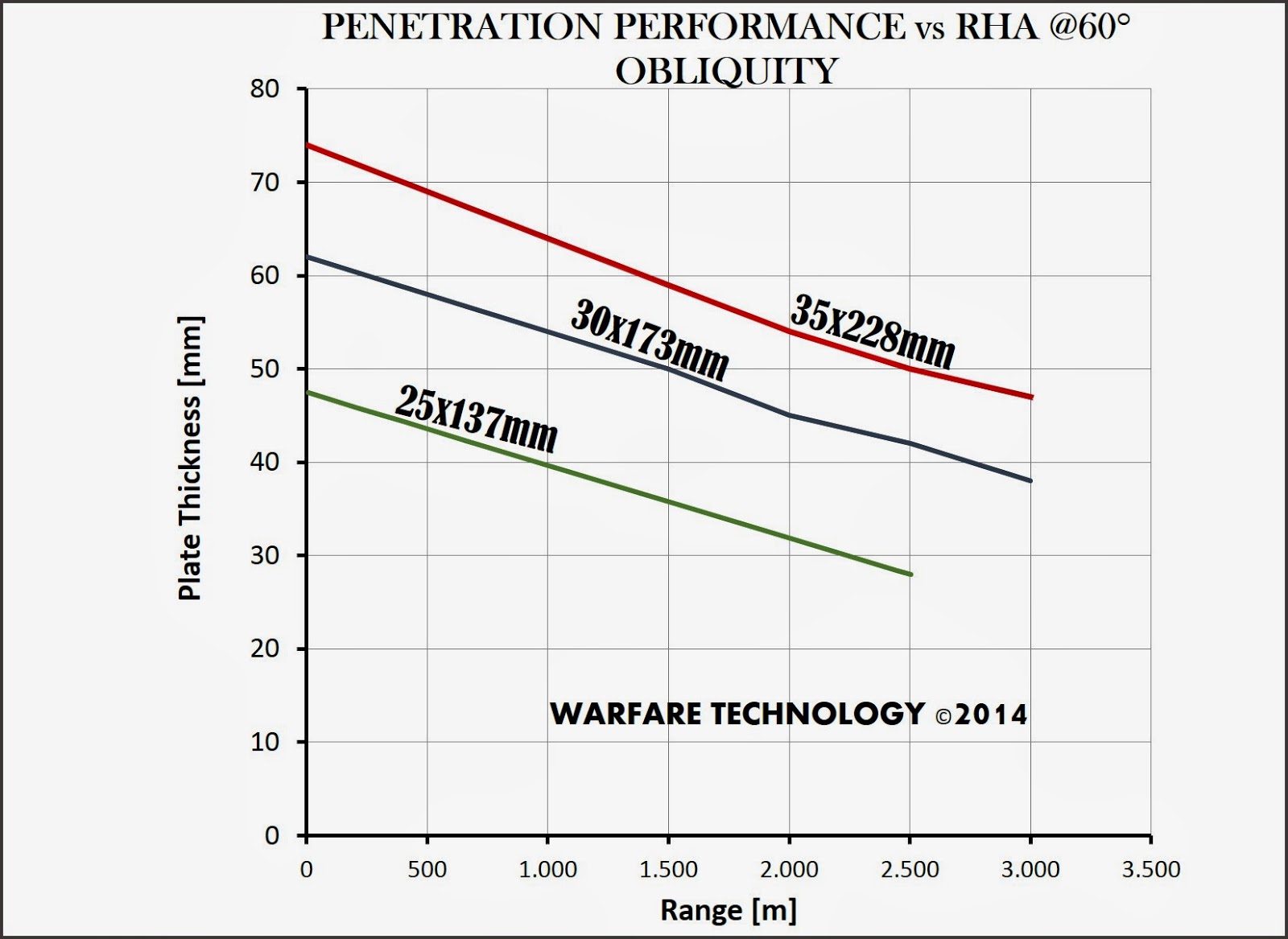And to go on a completely different scale, I was instead thinking about bug vs Armored Brigade Combat Team, which is probably the most difficult formation for the bugs to deal with.
Roughly 5,000 men, 90 tanks, 150 Bradley's, roughly 20 artillery pieces. Which I assume would mean about 900 infantrymen, assuming full dismounts. Seems to organically have at least a 100 trucks.
This is a withering amount of firepower. The tanker might from some angles be resistant to autocannon fire. But with its average of 20 mm effective armor thickness, not from very many angles. Even if the head got 40 mm effective thickness, autocannons will have no problem penetrating out to about a 1,000 meters. 50 mm effective nominally gets immunity, but legs and abdomen are not going to have that.
And obviously the Bradley's have more armor penetration ability anyways, plus the Abrams exist. I'm not sure the Tanker bugs will be particularly useful outside of ambushes in close terrain, or as clean up duty, melting down armored vehicles taken out some other way so they can't be recovered. That's potentially valuable, and there also may be some situations where a tanker may be able to ambush a Bradley or Abrams, but I'm not sure they would be common enough to plan around.

With this much firepower and armor penetration, I don't think Tanker bugs would be useful against the armored formation outside very specific circumstances.
On to other solutions. The obvious low tech solution is digging. 3-4 meter wide and deep trench should pose a fair challenge to moving forward. This is also conveniently the size of trench needed to move Warrior bugs around on little protected bug trails.

Fully underground would be superior, but that is also much slower: you can only have so many workers digging out the front of a tunnel. A trench however can be excavated along the entire length. This then would be invaluable in such a situation where time is of the essence, and they can be covered as time permits, or as fully underground alternative routs are brought online.

Cool image of ways things can be spread out.
Stopping tanks is going to require a lot of digging. Sticking with the earlier described idea of a landing hive with 5 km dispersion, about an hours walk for warriors. If you needed a 3x3 ditch for your Warriors to move between the two with some protection, that's about 10 cubic meters of dirt you need to remove per meter of trench. 5 km of trench would require excavating 50,000 cubic meters of dirt. It looks like it might take a human between 1-4 hours to dig up that much dirt, I'll go high and assume 4 bug hours of labor per cubic meter mostly workers, though Warriors can add their strength breaking up soil and removing large obstacles. So, about 200,000 bug hours per 5 km of trench.
1,000 workers might be able to dig that then in about 16 days, assuming they could sustain a 12 hour work cycle. This is a pretty long time, especially with how much trench one likely needs: an armored Brigade has about 250 AFVs. At very close spacing of 10 meter per vehicle the formation itself is still 2.5 km wide. More regular spacing closer to a 100 meters per vehicle is a 25 km front for the armored brigade. In a line formation to maximize frontage and immediate firepower at least. So, matching the brigades frontage at least requires 10-20 km of trench. Unless you have a hard choke point, more as armored formations are, well, maneuverable and can go around fortifications fairly easily.
Interestingly, if you do have evenly spread out forces and you connect to the three closest bases, you do naturally get a honeycomb set up, which could set up a very difficult position to attack.

If each of those corners is a minor hive, connected to their three closest other landing site hives with about 5 km to a side, you have a 30 km trench perimeter. Each Hive landing with 1,000 workers if dedicated to trench construction could get that all built in 16 days, since each one only has to build 5 km. Probably better instead to increase worker numbers to 30,000 instead of 6,000. This allows the 30 km of trench lines to be built in 3-4 days, which might be fast enough to have it completed before an armored brigade might be mobilized and deployed in force. Plus there's plenty of other digging that would be good to do.
So, in order to have a force that can build up enough defenses fast enough to resist an Armored brigade, a landing might instead then be about 50,000 bugs for about a 60 km^2 hex area. That might also be enough labor to carry out meaningful counter moves, such as aggressive trench construction to attack or try and flank the brigade.
However, this does dramatically reduce the number of places the humans would need to clear out bugs. Keeping a 5 million number, this reduces bug concentrations to about 100 sites, which is much closer to the number of spots the US military would be capable of dealing with.
Plus, 50k bug concentrations does also start to provide tempting strategic nuke targets, let alone anything smaller. 60 km^2 is still not that dense overall, but 50 k buts would still be getting to close to a 1,000 bugs per km^2. A 100 kton bomb with thermally irrate that large an area to give any with direct exposure 3rd degree burns.
Then again, bugs working in trenches and all the other underground locations does suggest a relatively small share of the colony might be at risk of line of sight exposure to an air burst at any one point anyways. You might be looking more at a 1 Mton or above to get good effects against most of the colony. But, if there's only a 100 of them, well those are numbers of heavy nukes the US still possesses.
Roughly 5,000 men, 90 tanks, 150 Bradley's, roughly 20 artillery pieces. Which I assume would mean about 900 infantrymen, assuming full dismounts. Seems to organically have at least a 100 trucks.
This is a withering amount of firepower. The tanker might from some angles be resistant to autocannon fire. But with its average of 20 mm effective armor thickness, not from very many angles. Even if the head got 40 mm effective thickness, autocannons will have no problem penetrating out to about a 1,000 meters. 50 mm effective nominally gets immunity, but legs and abdomen are not going to have that.
And obviously the Bradley's have more armor penetration ability anyways, plus the Abrams exist. I'm not sure the Tanker bugs will be particularly useful outside of ambushes in close terrain, or as clean up duty, melting down armored vehicles taken out some other way so they can't be recovered. That's potentially valuable, and there also may be some situations where a tanker may be able to ambush a Bradley or Abrams, but I'm not sure they would be common enough to plan around.

With this much firepower and armor penetration, I don't think Tanker bugs would be useful against the armored formation outside very specific circumstances.
On to other solutions. The obvious low tech solution is digging. 3-4 meter wide and deep trench should pose a fair challenge to moving forward. This is also conveniently the size of trench needed to move Warrior bugs around on little protected bug trails.

Fully underground would be superior, but that is also much slower: you can only have so many workers digging out the front of a tunnel. A trench however can be excavated along the entire length. This then would be invaluable in such a situation where time is of the essence, and they can be covered as time permits, or as fully underground alternative routs are brought online.

Cool image of ways things can be spread out.
Stopping tanks is going to require a lot of digging. Sticking with the earlier described idea of a landing hive with 5 km dispersion, about an hours walk for warriors. If you needed a 3x3 ditch for your Warriors to move between the two with some protection, that's about 10 cubic meters of dirt you need to remove per meter of trench. 5 km of trench would require excavating 50,000 cubic meters of dirt. It looks like it might take a human between 1-4 hours to dig up that much dirt, I'll go high and assume 4 bug hours of labor per cubic meter mostly workers, though Warriors can add their strength breaking up soil and removing large obstacles. So, about 200,000 bug hours per 5 km of trench.
1,000 workers might be able to dig that then in about 16 days, assuming they could sustain a 12 hour work cycle. This is a pretty long time, especially with how much trench one likely needs: an armored Brigade has about 250 AFVs. At very close spacing of 10 meter per vehicle the formation itself is still 2.5 km wide. More regular spacing closer to a 100 meters per vehicle is a 25 km front for the armored brigade. In a line formation to maximize frontage and immediate firepower at least. So, matching the brigades frontage at least requires 10-20 km of trench. Unless you have a hard choke point, more as armored formations are, well, maneuverable and can go around fortifications fairly easily.
Interestingly, if you do have evenly spread out forces and you connect to the three closest bases, you do naturally get a honeycomb set up, which could set up a very difficult position to attack.

If each of those corners is a minor hive, connected to their three closest other landing site hives with about 5 km to a side, you have a 30 km trench perimeter. Each Hive landing with 1,000 workers if dedicated to trench construction could get that all built in 16 days, since each one only has to build 5 km. Probably better instead to increase worker numbers to 30,000 instead of 6,000. This allows the 30 km of trench lines to be built in 3-4 days, which might be fast enough to have it completed before an armored brigade might be mobilized and deployed in force. Plus there's plenty of other digging that would be good to do.
So, in order to have a force that can build up enough defenses fast enough to resist an Armored brigade, a landing might instead then be about 50,000 bugs for about a 60 km^2 hex area. That might also be enough labor to carry out meaningful counter moves, such as aggressive trench construction to attack or try and flank the brigade.
However, this does dramatically reduce the number of places the humans would need to clear out bugs. Keeping a 5 million number, this reduces bug concentrations to about 100 sites, which is much closer to the number of spots the US military would be capable of dealing with.
Plus, 50k bug concentrations does also start to provide tempting strategic nuke targets, let alone anything smaller. 60 km^2 is still not that dense overall, but 50 k buts would still be getting to close to a 1,000 bugs per km^2. A 100 kton bomb with thermally irrate that large an area to give any with direct exposure 3rd degree burns.
Then again, bugs working in trenches and all the other underground locations does suggest a relatively small share of the colony might be at risk of line of sight exposure to an air burst at any one point anyways. You might be looking more at a 1 Mton or above to get good effects against most of the colony. But, if there's only a 100 of them, well those are numbers of heavy nukes the US still possesses.




